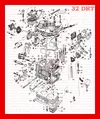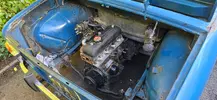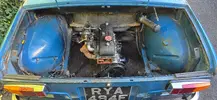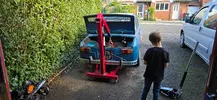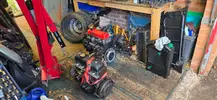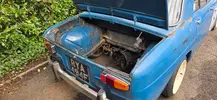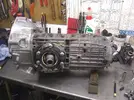Interesting this carb orientation and manifolding angle issue , both my standard 60bhp R8S cars had the usual 32 DIR Weber carb with the 2 spindles parallel to the engine crank centreline, and the fuel bowl located at the flywheel end, both spindles progressive linkages were facing the Water pump end.
I however used a Weber 28/36DCD carb from a Cortina 1500GT, on my hot Sacco 904cc unit for the 4CV Le Mans replica, these carbs are universal and can be jetted for most size engines, I used Imp Sport Chokes and jets with success on an Autobleu 4 into 1 branch with big bore pipe. These carbs are about on ebay in used condition as they are still popular for Minis and Fords and are well supported by yje Carb specialists i.e Fast Road Cars.
Regarding the manifolds being at an angle to the horizontal, I have a FWD uninspected 1108cc unit with sloping manifolds in stock and I may fit it into the Dauphine instead of the usual R5Gordini Crossflow unit which everyone seems to fit these days. Seeing that posted adaptor block solution to level the carb off, I might further reconsider using this motor. Saying that Salv is sorting a cam for my Volvo 1397cc unit, which is also earmarked for the Dauphine, thankfully its all vertical and its 32DIR carb is horizontal and is rated at between 71-75bhp according to the tech info on line, so hopefully an R10 1300 std box will cope with it. This motor looks like an R8S/R12TS unit at a glance.
Cheers
W

